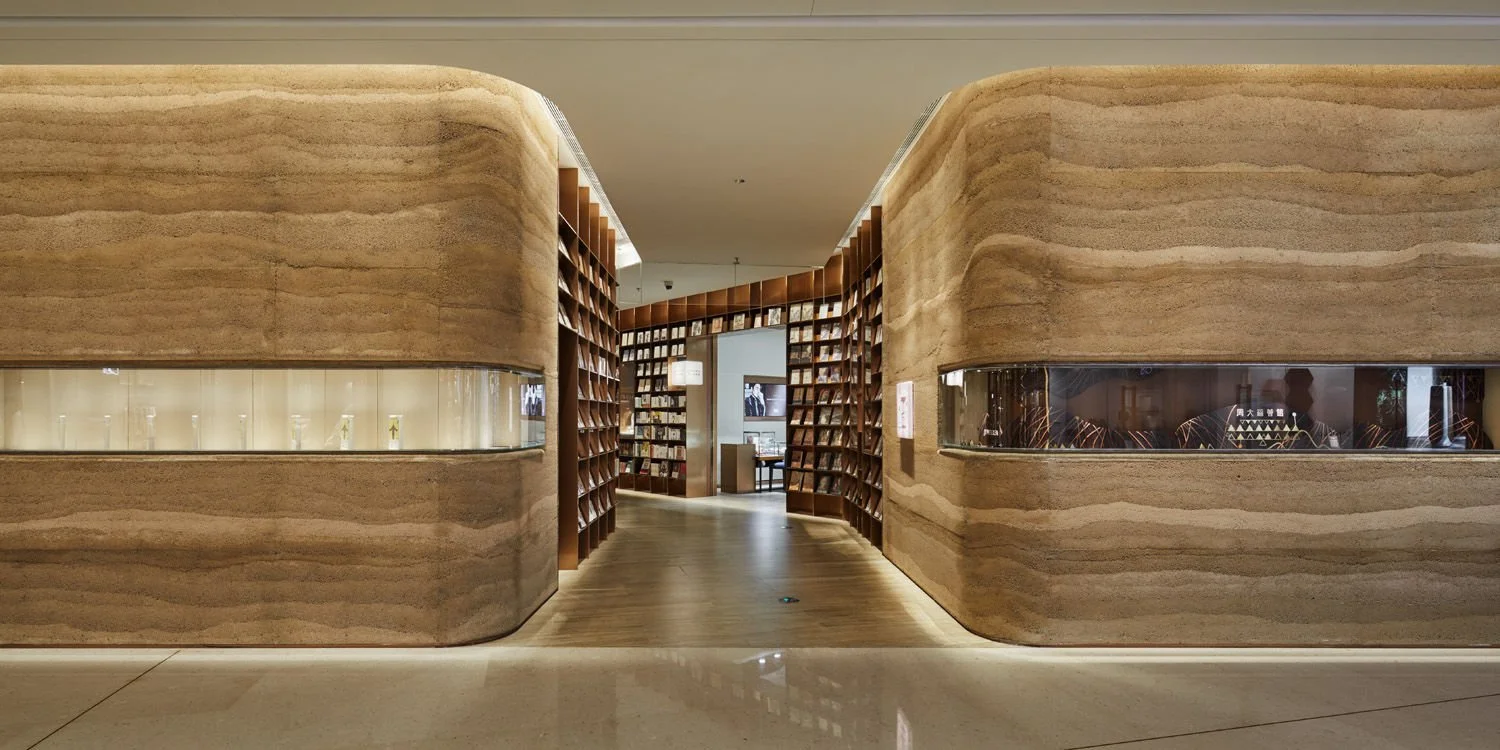What could be more stable, more beautiful, or more primal than the Earth herself? Rammed earth is the technique of layering pressed dirt into a form. It has been used in construction for thousands of years, with evidence of its use dating as far back as the Neolithic Period. Commonly used especially in China, the technique was applied to both ancient monuments and vernacular architecture, with the Great Wall utilizing the technique. Though interest in rammed earth declined in the 20th century, the technique is making a comeback due to its unique beauty and its sustainability in comparison to more modern construction methods.
KAYA Sales Office in Koh Samui, Thailand
Low Environmental Impact
Building with rammed earth has a low carbon footprint. To begin with, the rammed earth consumes very little nonrenewable energy during its lifecycle. Energy is consumed during the transportation of soil from off-site resources, which, in a best-case scenario, can be avoided by harvesting soil on-site.
Local Materials
The technique uses local materials, meaning they have low embodied energy and produce little waste. There are different types of rammed earth, but generally it is made from a mixture of the soil on site, sand, clay, gravel, silt and cement which is compacted between wooden or metal shutters. It’s like a recipe and every chef has their own way of doing it. After testing the composition and structure of the local soil, a formula is created specifically for the design. The thickness of rammed earth provides sufficient insulation, meaning less energy is needed to actively cool or heat earth buildings. Overall, rammed earth consumes less energy during its whole life cycle than conventional building materials.
'YAN' bookstore by Tomoko Ikegai in Shenzhen, China
High Thermal Mass
Rammed earth walls are usually a thickness of 1 foot, which, in addition to the density of the material, protects the interiors from extreme weather conditions. The external temperature takes a relatively long time to penetrate rammed earth which stabilized the internal temperature of the buildings. Because of this, rammed earth buildings feel cooler in summers or during the day, and warmer in winters or during the night—making a perfect material where the temperature fluctuates over days or seasons.
Strength & Durability
According to scientific experiments, both stabilized and non-stabilized rammed earth structures are extremely strong and durable. They are strong enough to bear loads and resist winds, and durable enough to withstand harsh weather conditions for long periods of time. More than cement stabilizers, other additions can be incorporated into the rammed earth mixture to make it even stronger, like synthetic fiber or steel reinforcement—these will help rammed earth structures perform in a likely manner to concrete in terms of strength, but with a way more sustainable approach. It is believed that further research and technical studies will facilitate the broader use of rammed earth.
Acoustic Insulation
Rammed earth walls provide very well thermal insulation because of their thickness and density. For the same reasons, they provide high acoustic insulation and reduce noise transmission. This feature makes rammed earth walls on the exterior perfect for locations where heavy rains or strong winds exist—they will create a much calmer and sheltered space. On the other hand, interior rammed earth walls provide sound insulation between zones with different ambiances, like a living room and a studying room, keeping privacy and maintaining actual separation. Acoustic insulation also makes rammed earth a suitable choice for buildings where quietness is needed, like rehabilitation facilities and religious buildings.
Design Advantages
Rammed earth walls are generally extremely thick, allowing for unique entrance ways, thick window ledges, sumptuous curved walls and other design opportunities. The natural pigmentation from the clays used in the construction process often creates streaks and contours of different natural-colored earthen pigments that resemble the earth’s sedimentation lines. It’s easy to mount art, lettering or other ornamentation, providing strength and stability to the hung art.
'YAN' bookstore by Tomoko Ikegai in Shenzhen, China
Resistance and Safety
Rammed earth structures are safe. The sustainable material can be classified as a non-combustible material as it contains no flammable components, hence it is fire resistant. Moreover, rammed earth is, by nature, breathable. Regarding pests, rammed earth is highly resistant to termites and other pests. Also, the durability of rammed earth reduces the need for timber framing that might attract termites.
Versatility
Building with rammed earth might propose some limitations regarding spans and height, however, it is a versatile material that has several applications in different forms. It offers variations in textures and colors and allows incorporating decorative features ranging from finishing coats to feature stones. Moreover, all shapes of windows and openings can be cut from rammed earth walls.
Aesthetic Harmony
Aesthetic harmony occurs when some quality in a part belongs to the qualities of the whole. The colors and textures of rammed earth structures belong and blend very well with their natural context. This harmony brings calmness and helps the inhabitants reconnect with nature and earth. Blurring the lines between inside and outside helps the dweller to feel centered, in a state of zen and at peace.
Building with rammed earth is regaining popularity in our modern days as more architects and constructors are realizing the importance of using sustainable materials that have a low environmental impact. Although the material proposes some limitations, its advantages and the continuous scientific research regarding its potential are favoring it over conventional, less sustainable materials. Adding to its availability and durability, it is also versatile—rammed earth can be used to create building blocks or to build whole walls on site.
As a sustainable property developer, our future-proof homes at Hin Fah and KAYA are designed to provide a resilient and enduring sanctuary for its residents. We build with an awareness of future challenges and environmental risks—creating a modern community that will be able to thrive in the new normal and beyond.
To book a viewing of our completed rammed earth structures, contact us at living@hinfah.com
(Sources: ArchDaily, Arch2o)



